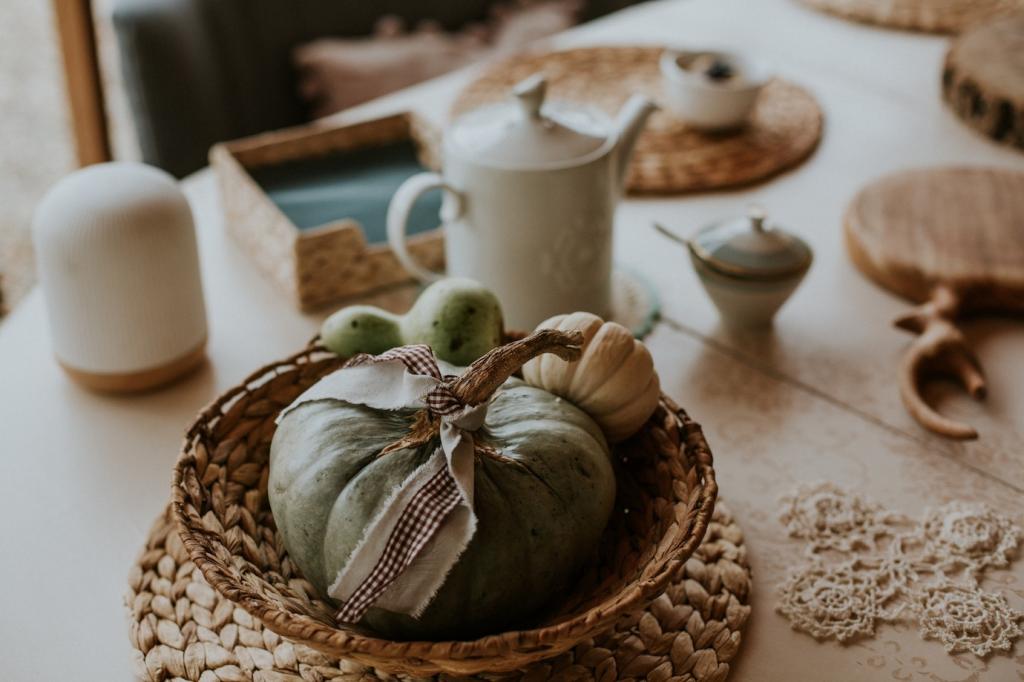Bright, Beautiful, and Responsible: Energy‑Efficient Lighting for Eco‑Friendly Interiors
Chosen theme: Energy-Efficient Lighting Solutions for Eco-Friendly Interiors. Welcome to a home page dedicated to lighting that protects the planet while elevating everyday life. Explore practical strategies, real stories, and inspiring design ideas that help you save energy, reduce waste, and create nurturing atmospheres. Join the conversation, share your goals, and subscribe for ongoing guides, checklists, and seasonal lighting tips.

Stop Buying by Watts—Think in Lumens
Focus on lumens for brightness, not watts. Many home LEDs deliver 90–120 lumens per watt, while halogens struggle around 15–25. An 800‑lumen lamp replaces a 60‑watt incandescent with far less heat. That heat reduction also eases cooling loads, compounding savings. Share your best lumen‑per‑watt upgrade below.

Color That Feels Right: CRI and CCT Explained
Choose CRI 90+ where color matters—kitchens, studios, wardrobes—so materials look natural. Warm 2700K calms evenings; 3000–3500K suits living rooms; 4000K supports focused work. Tunable white fixtures shift through the day, nurturing circadian rhythms while conserving energy. What color temperatures feel best in your home? Tell us why.

Lifetime Value: Fewer Replacements, Lower Waste
Many LEDs last 15,000–50,000 hours, slashing replacement cycles, packaging, and trips to the store. Over years, that durability reduces embodied emissions and maintenance. Look for ENERGY STAR ratings for tested longevity and reliability. Track your average burn hours and forecast savings; we’ll help refine your real‑world payback if you comment with details.
Layered Lighting that Uses Less and Delivers More
Ambient Foundations with Efficient Fixtures
Create gentle, uniform illumination using efficient ceiling fixtures, slim LED pendants, or surface‑mounted disks. Aim for dimmable drivers to scale output for movie nights or bright chores. Lower average intensity often feels softer and more natural. Post your room size and ceiling height, and we’ll suggest a lumen range that avoids waste.
Task Lights that Focus Energy Where You Need It
Place desk lamps, under‑cabinet bars, or reading sconces exactly where tasks happen. Narrow beams and proper shielding reduce spill light, keeping ambient levels low. You’ll see better with fewer watts. Share a photo of your workspace, and we’ll recommend beam angles or mounting distances that optimize clarity and efficiency.
Accent Magic with Minimal Footprint
Use low‑wattage spots or LED strips to highlight art, plants, or textured walls. High‑efficacy, high‑CRI options make colors pop without energy guilt. Limit runtime with scenes and timers so accent light only glows when it matters. Tell us your favorite accent feature, and we’ll suggest a minimal‑energy solution to elevate it.
Dimmer Scenes for Mood and Efficiency
Modern dimmers create preset scenes—dinner, focus, unwind—so lights run only as bright as needed. Dimming even modestly compounds savings over many hours. In our hallway test, a 30% reduction felt identical but lowered monthly usage noticeably. Share your favorite scene, and we’ll help tune brightness and color for efficiency and comfort.
Occupancy and Vacancy Sensors that Remember for You
Sensors cut the lights when rooms go empty, protecting energy during busy days. Frequent culprits include closets, laundry rooms, and garages. One reader installed vacancy sensors in a kids’ playroom and shaved off surprise kilowatt‑hours without arguments. Where do lights often stay on at your place? Let us suggest the right sensor type.
Daylight Sensors and Adaptive Tuning
Daylight harvesting trims output automatically when the sun provides enough light, often delivering significant reductions across bright hours. Adaptive tuning slowly shifts brightness to match the day, maintaining comfort invisibly. If your windows are generous, you might save more than you expect. Describe your orientation, and we’ll estimate potential gains together.
Daylight, Reflections, and Architectural Moves
South and east exposures can flood spaces in mornings and midday. Use sheer shades, adjustable louvers, and matte finishes to tame glare while preserving brightness. Strategic furniture placement keeps tasks within daylight zones. Share your window directions and wall colors, and we’ll suggest treatment layers that balance comfort and efficiency.

Daylight, Reflections, and Architectural Moves
Well‑placed skylights or tubular daylighting devices channel soft daylight into interior zones, reducing electric lighting hours. Diffusers and baffles spread light evenly to avoid hotspots. A neighbor’s corridor transformed from cave to gallery with one tube. Considering a retrofit? Ask about shaft reflectance and roof orientation before you cut.
Materials, Certifications, and Health
Look for ENERGY STAR residential labels and DesignLights Consortium listings for verified efficacy and performance. RoHS compliance limits hazardous substances, supporting healthier homes. Regional codes, like California Title 24, encourage efficient controls. Share product links, and we’ll help interpret certifications, warranties, and testing notes so your purchase aligns with your sustainability goals.
Choose fixtures using recycled aluminum or steel, FSC‑certified wood accents, and low‑VOC coatings to reduce indoor pollutants. Minimal packaging and repairable parts add further value. We love makers who publish Environmental Product Declarations. Tell us what materials you prefer, and we’ll curate a shortlist that aligns with your values and style.
Seek modular fixtures with replaceable light engines, drivers, and diffusers. This extends product life, reduces waste, and eases future upgrades as efficacy improves. One reader revived a cherished pendant with a new driver, cutting energy while preserving memories. Have a legacy lamp? We’ll help map a safe, efficient retrofit path.

Stories from Real Spaces and Practical ROI
In a cozy studio, swapping five old bulbs for 8‑watt LEDs, adding an under‑cabinet bar, and installing a vacancy sensor cut lighting energy dramatically. The owner noticed cooler summer evenings and clearer countertops. Their favorite moment? Reading under task light at half brightness—calm, bright, and quietly efficient. What’s your weekend plan?

